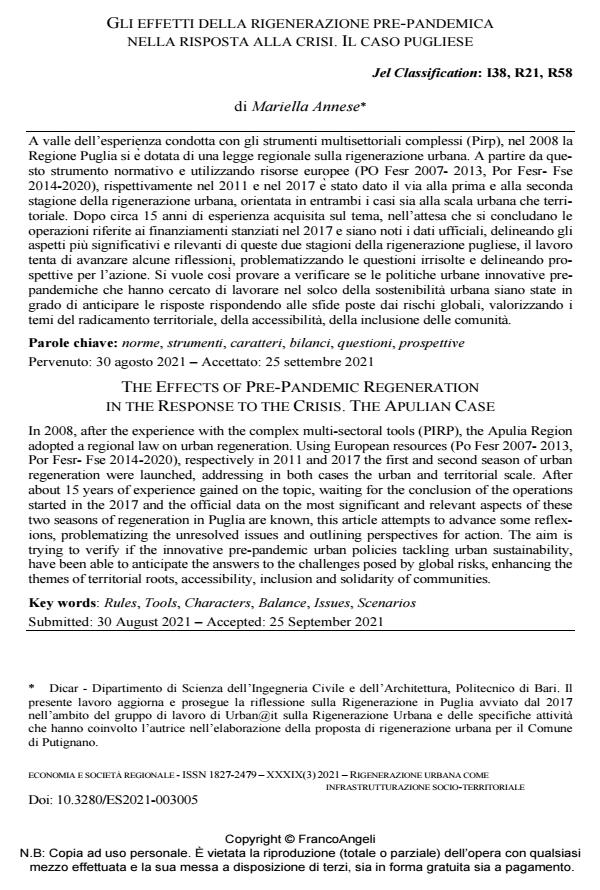The effects of pre-pandemic regeneration in the response to the crisis. The apulian case
Journal title ECONOMIA E SOCIETÀ REGIONALE
Author/s Mariella Annese
Publishing Year 2022 Issue 2021/3
Language Italian Pages 16 P. 61-76 File size 665 KB
DOI 10.3280/ES2021-003005
DOI is like a bar code for intellectual property: to have more infomation
click here
Below, you can see the article first page
If you want to buy this article in PDF format, you can do it, following the instructions to buy download credits

FrancoAngeli is member of Publishers International Linking Association, Inc (PILA), a not-for-profit association which run the CrossRef service enabling links to and from online scholarly content.
In 2008, after the experience with the complex multi-sectoral tools (PIRP), the Apulia Region adopted a regional law on urban regeneration. Using European resources (Po Fesr 2007- 2013, Por Fesr- Fse 2014-2020), respectively in 2011 and 2017 the first and second season of urban regeneration were launched, addressing in both cases the urban and territorial scale. After about 15 years of experience gained on the topic, waiting for the conclusion of the op-erations started in the 2017 and the official data on the most significant and relevant aspects of these two seasons of regeneration in Puglia are known, this article attempts to advance some reflexions, problematizing the unresolved issues and outlining perspectives for action. The aim is trying to verify if the innovative pre-pandemic urban policies tackling urban sustaina-bility, have been able to anticipate the answers to the challenges posed by global risks, en-hancing the themes of territorial roots, accessibility, inclusion and solidarity of communities.
Keywords: Rules, Tools, Characters, Balance, Issues, Scenarios
- The regeneration policy and housing issue. The Italian case read through the history of Foggia (IT) Mariella Annese, Laura Ariola, Ilaria Lucia Mezzapesa, Natalia Roberto, in City, Territory and Architecture 5/2024
DOI: 10.1186/s40410-024-00225-9
Mariella Annese, Gli effetti della rigenerazione pre-pandemica nella risposta alla crisi. Il caso pugliese in "ECONOMIA E SOCIETÀ REGIONALE " 3/2021, pp 61-76, DOI: 10.3280/ES2021-003005